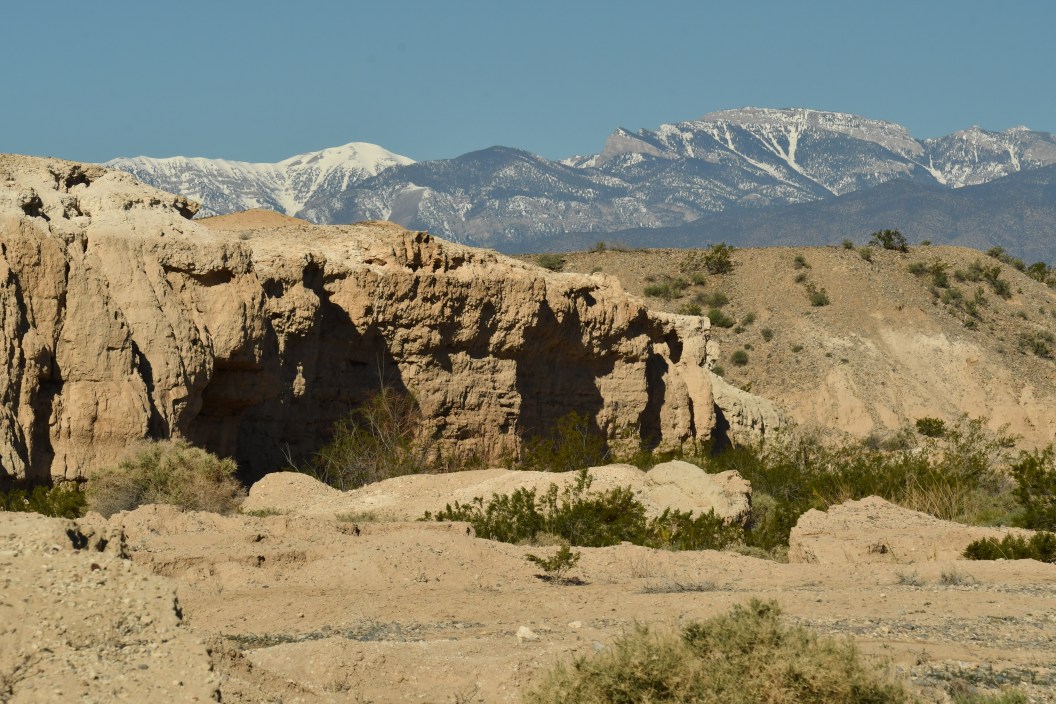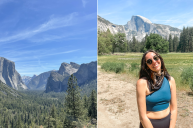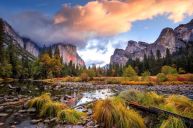More than a decade after the release of the hilariously popular animated film that introduced the world to mammoths, sabertooth tigers, and ground sloths, "Ice Age" enthusiasts will finally get a chance to experience the Pleistocene Epoch with the opening of Nevada's Ice Age Fossils State Park on Jan. 20.
The park is just 20 miles north of the Las Vegas Strip, making it a perfect day trip for those enjoying a vacation there. During the Ice Age, the northern Las Vegas area was quite different from the desert environment we see today. The Las Vegas Wash was filled with lush, green landscape, and marshlands filled the valley.
"During the Pleistocene, also known as the Ice Age, the wash provided verdant habitat for several species of now extinct mammals, including Columbian mammoths, American lions, camels, dire wolves, and ground sloths," explains Ice Age Fossils State Park's website. "The discovery of abundant fossils on site triggered a long history of scientific research, which includes the famous 'Big Dig' of 1962, the largest inter-disciplinary scientific expedition of its kind up to that point."

Nevada State Parks
Eventually, the landscape began to shift, giving way to spring-fed streams and the arid desert environment that we are familiar with today. According to the park's website, humans likely graced the valley around 12,000 years ago, co-mingling with the megafauna that remained in the wash.
Over the years, water carved the landscape within the park into the deep washes and pockets that visitors will get to experience as they explore the park.
Modern Park History: Fossil Discoveries

Nevada State Parks
The U.S. Geological Survey made the first fossil discoveries in the park in 1903. The site became home to researchers studying archeology, paleontology, and geology for the next five decades. It was thrust into public view in 1958, when new studies and discoveries led to the 315-acre park being acquired by the then-Nevada State Parks Commission.
The Tule Springs Expedition, better known as the Big Dig, is the focal point of the park's attractions. The dig was part of a four-month-long study at the height of the wash's popularity from 1962-1963. The goal was to find evidence of the area's human residents, and the project included bringing in heavy machinery and a new technology: radiocarbon dating. However, researchers couldn't find conclusive evidence at Tule Springs, and interest in the site went as dormant as the underlying fossils.
Almost 30 years later, in the late 1990s and early 2000s, researchers returned to the wash with one goal in mind: describing fossil history and geology. What they found was hundreds of fossil sites in the Tule Springs area, leading to an expanded view of Nevada's Ice Age and renewed fervor for preservation—which came to fruition in 2017 thanks to Gov. Brian Sandoval pulling the property into his "Explore Your Nevada" initiative.
Things to Do at Ice Age Fossil Park
The park's goal is to provide a comprehensive history experience for the community while educating people about the environment, Garrett Fehner, Ice Age State Park supervisor, told 8 News Now at Tuesday's ribbon-cutting."Can you imagine what this place looked like over 21,000 years ago where there's this lush green landscape and megafauna roaming here?" Fehner said. "It puts it in perspective for modern Las Vegans to come out here and look at what it looks like today and really be prompted to imagine what it looked like back then."
After years of building a top-notch recreational center, museum, visitor facilities, and trail shade structures, the park is poised to finally open its gates to the public. Park visitors will get to enjoy the park's picnic areas, natural history exhibits—including a 10-minute video about the area's history—covered outdoor seating, and restrooms. The park also has three main trails, which can be hiked separately or as part of a longer, 4-mile loop.
- Megafauna Trail: While it may be short, this 0.3-mile trail is packed with sights. Start at the Monumental Mammoth metal sculpture, which was once featured at Burning Man, and end at the visitor center. The trail also features additional metal sculptures of megafauna that were found in the Las Vegas Wash.
- Las Vegas Wash Trail: The longest trail out of the bunch, this 1.5-mile trail takes visitors through the Las Vegas Wash and Trench K. While it may be dry for the majority of the year, it's best to check on trail conditions before heading out.
- Big Dig Trail: Meander through the trenches dug in the 1960s during the Big Dig on this 1.2-mile loop at the east end of the park. The trail runs into the Trench K site, giving visitors a look at fossils.
Eventually, the park will offer special events and guided hiking tours. The Nevada Independent reports that there are also plans for a fossil repository and paleontology lab. For the time being, the park will only be open to the public on weekends, from 8 a.m. to 4:30 p.m., giving park employees time to make operational adjustments. Visitors age 12 and older will be charged a $3 entrance fee per person. Leashed dogs are welcome in the park.
Much like other state and national parks, it's imperative that visitors practice Leave No Trace Principles while there. The park puts a heavy emphasis on not "removing, disturbing or damaging any historic structure, artifact, rock, plant life, fossil, or other feature," as they are all protected by state and federal laws. Enjoy the sights and take lots of pictures, but leave the fossils in the dirt.
READ MORE: The 9 Best State Parks in Nevada, Ranked




